- About
- Topics
- Story
- In-Depth
- Picks
- Opinion
- News
- Donate
- Signup for our newsletterOur Editors' Best Picks.Send
Read, Debate: Engage.
| July 15, 2025 | |
|---|---|
| topic: | Indigenous people |
| tags: | #indigenous people, #Amazon river, #water security |
| located: | Peru, Colombia |
| by: | Giuditta Pellegrini |
A Peruvian woman, from the village of Aucaya, who works in a shop in Iquitos and prefers to remain anonymous out of sensitivity, told FairPlanet about her fears. "The river is rising a lot, we feel in danger," she explained from the Boulevard Joaquim Abensur, overlooking the Itaya River, a direct tributary of the Amazon River.
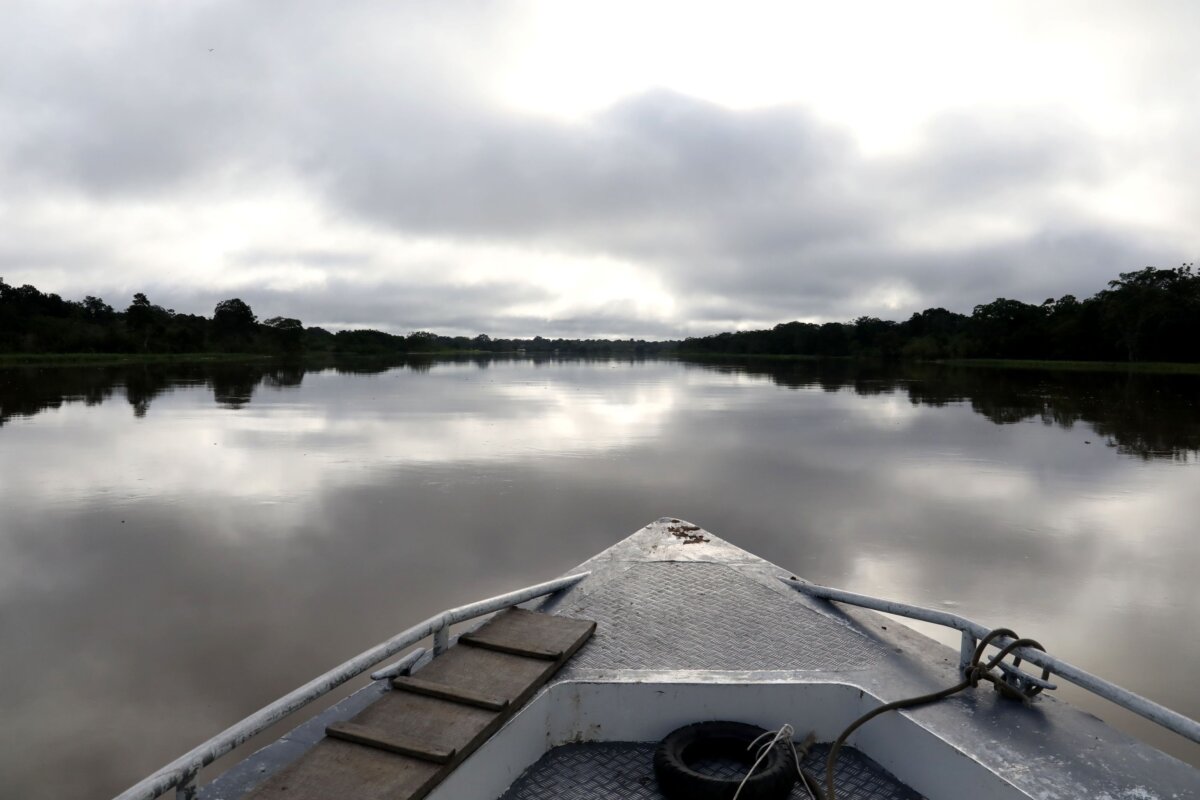
The Amazon River at dawn from the Iquitos-Santa Rosa boat, April 2025.
In April, the National Meteorological and Hydrological Service (SENAMHI) raised an alarm in Iquito - a city located in the heart of the Amazon Basin, in the department of Loreto - when the river level rose by 10-15 centimetres a day. The heavy rains increased the flow of its main tributaries, the Marañón and Ucayali rivers. Iquitos’ streets were flooded due to seven hours of rain, an event that was abnormal even for the wet season.
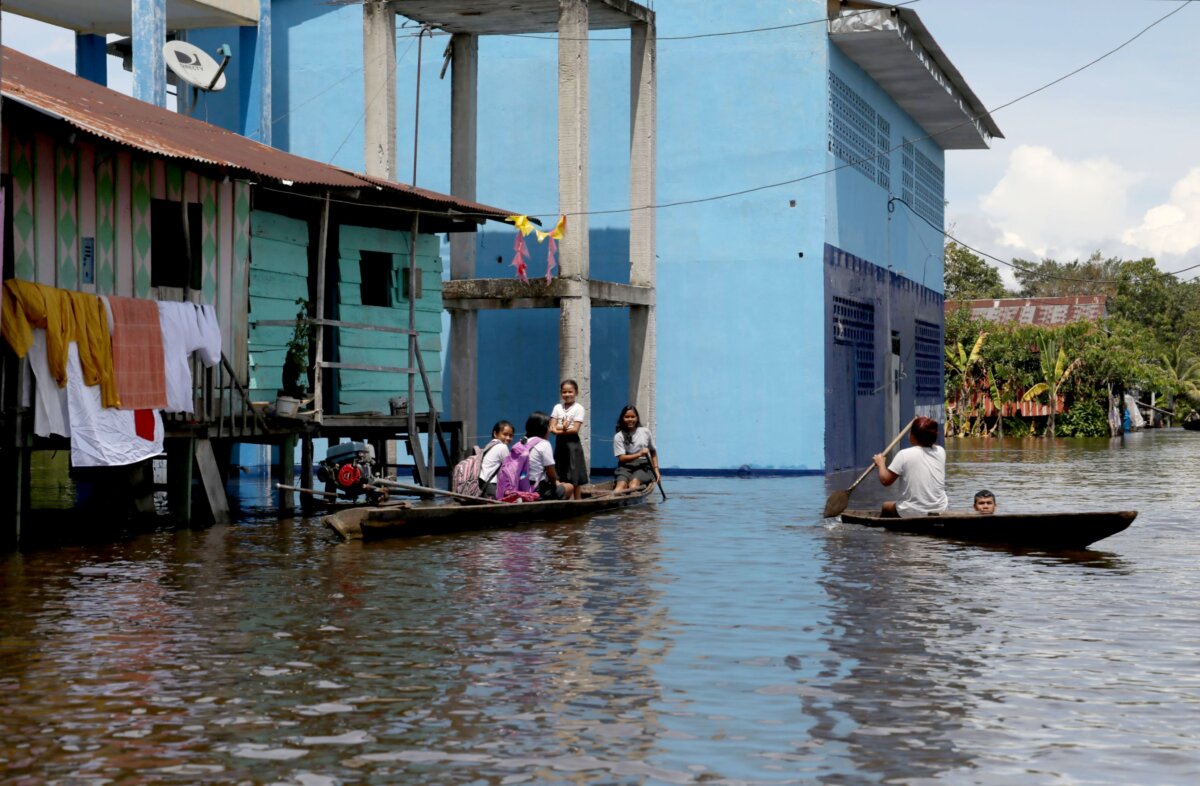
Extreme weather events are increasingly hitting the Amazon River area, endangering lives along one of the world’s most important rivers. Belén floating neighbourhood, April 23, 2025.
Those particularly affected are the more than 400 ethnic groups of indigenous peoples, 82 of whom live in voluntary isolation, listed in the digital atlas Amazonia Bajo presión.
According to data from Senamhi, reported by the local press, around 8,000 people have been affected by the floods in Loreto. The inundation of homes and crops with stagnant water has increased the spread of diseases such as dengue, yellow fever and malaria, especially in already vulnerable communities that lack adequate infrastructure to deal with natural disasters. The floating neighbourhood of Belén is an example of such an area.
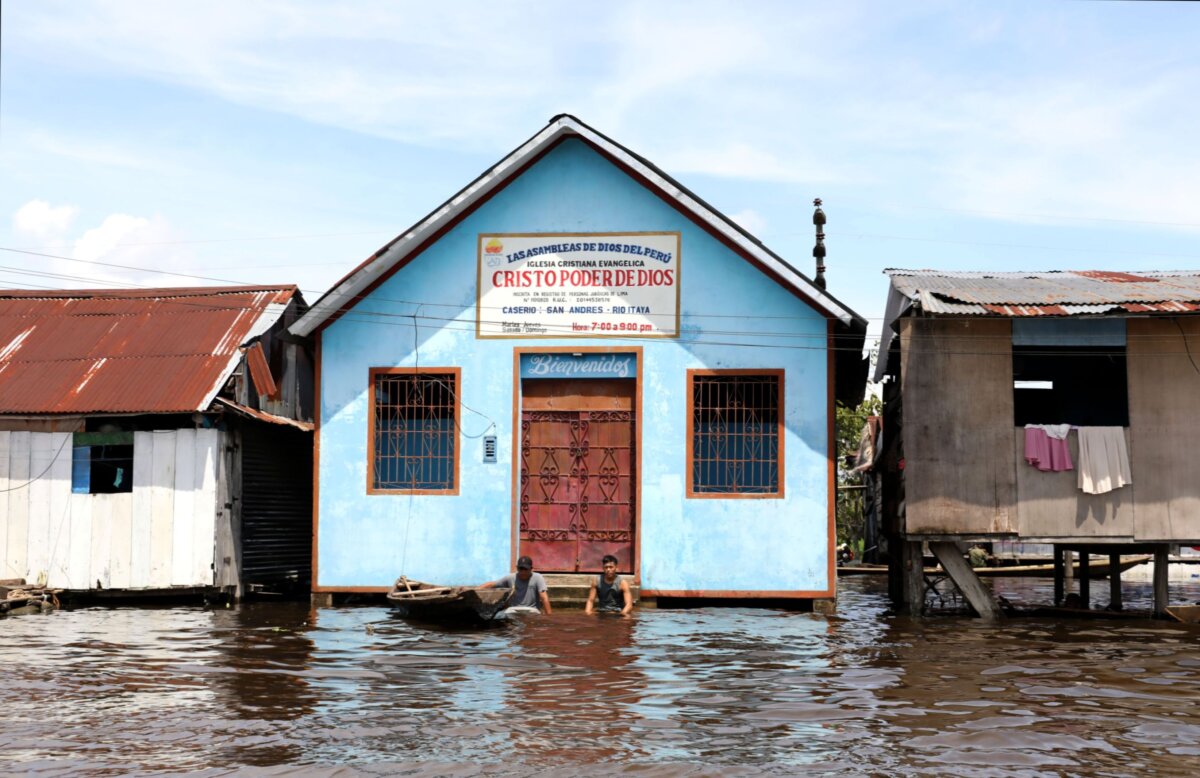
Floating neighbourhoods do not have the necessary infrastructure to withstand the growing frequency of natural disasters. Belén floating neighbourhood, 23 April, 2025
"We fear the increase in insects and diseases. The homes of those who live on the banks of the river are in danger, and there is no help from the government," the Peruvian saleswoman said bitterly.
Like many of the 65,000 people who live in Belén, she arrived in the 1980s from one of the nearby villages in the Amazon jungle in search of work. Today, however, most of the population lives in extreme poverty, without electricity, running water and sanitation.
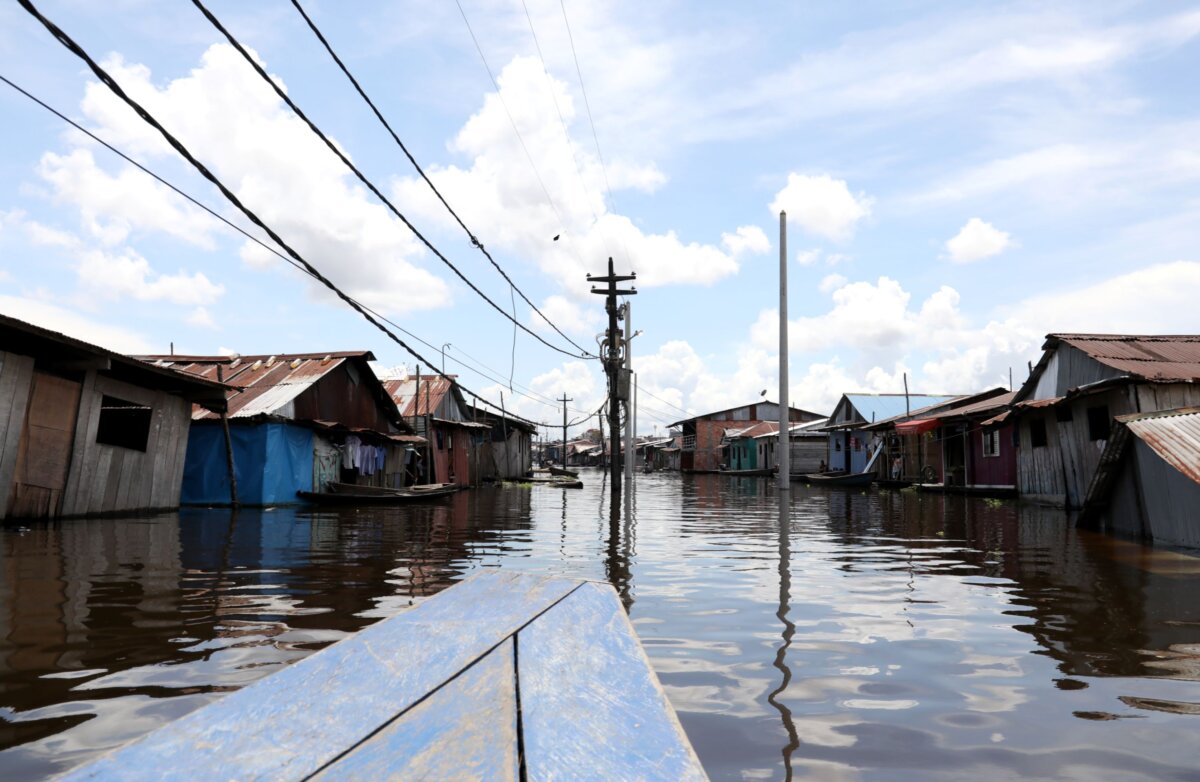
Belén floating neighbourhood, April 23, 2025
The fragility of Iquitos, the largest existing city connected to the outside world only by air or river, had already become apparent during the particularly severe droughts of August and October 2024. Droughts that brought the Amazon River to its lowest levels in the century, with some stretches completely dried up.
The city was paralysed for days with its cargo ships blocked while perishable goods rotted, unable to arrive from the port of Pucalpa, jeopardising food security, some ferry pilots told local TV stations.
A deep sense of uncertainty was instilled in the population. The very low water level did not allow boats to move along the thousand kilometres that connect Iquitos to the triple border with Peru and Brazil, dotted with small indigenous villages such as Pebas, San Nicolas, Caballococha and Santa Rosa, from which it is possible to reach the main city of the Amazonas department, Leticia. Here is where the effects of the drought were most severe.
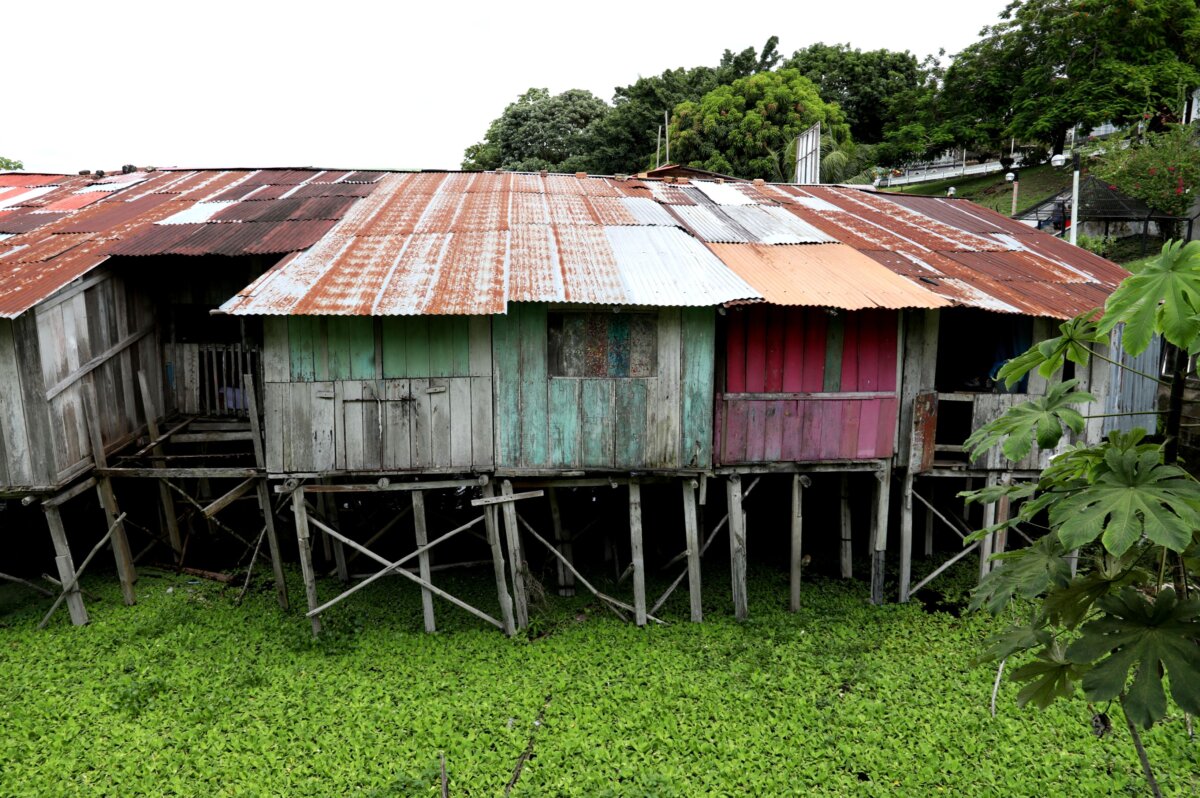
Iquitos, Peru. 17 April, 2025.
Between August and October 2024, the Peruvian Institute of Hydrology, Meteorology and Environmental Studies (IDEAM) detected an 82 per cent decrease in flow compared to April of the same year at the stations of the Nazareth Strait, located between the city of Leticia and Puerto Nariño.
A drop of approximately 11 meters and a 64 per cent reduction in flow speed caused a decrease in water transport from 44,711 to 8,428 m³ per second.
According to the National Unit for Disaster Risk Management (UNGRD), one of the most critical points was the stretch of the Loretoyaco River, a branch of the Amazon, where the interruption of connection with the nearby Tarapoto Lake has affected the water supply for nearly 10 indigenous communities, with a total population of 3,000 people. The drought has severely endangered native species, such as the pink dolphin, and further, food supplies in the area since the primary diet is based on river fishing.
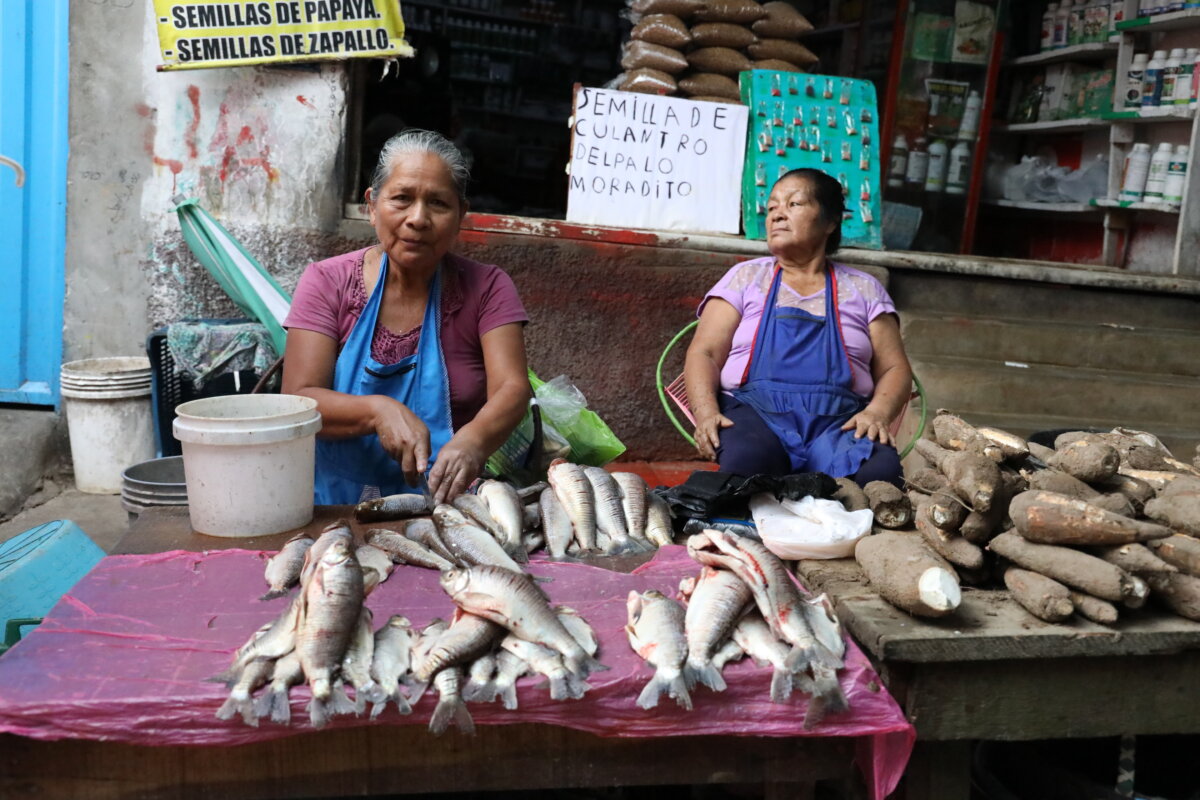
The lack of rainfall, combined with increases in temperature and deforestation, is causing droughts that restrict indigenous communities' access to much-needed food sources. Belén floating neighbourhood, 23 April, 2025
"It was terrible, I don't remember ever seeing anything like it," Javier Jimenez, a resident of the island of Corea, just south of the strait, told FairPlanet, "Most of our communities drink rainwater, and at that time there was none."
According to a study prepared by the Defensoría del Pueblo of Colombia, the lack of rainfall in the Peruvian Andes - where the Amazon River originates - and the 2024 draught were triggered by a reduction in rainfall of between 50 and 100 mm per month, combined with temperatures rising by up to 3°C above the usual average.
Researchers from the National University of Colombia have also emphasised that these factors were exacerbated by human activities, such as the severe fires in Brazil in 24 August, which, as a direct result of deforestation, compromised the standard water cycle.
Defensoría has highlighted that deforestation has resulted in a 17 per cent loss of vegetation cover, and if no action is taken, an additional 2.1 million hectares could be lost by 2040. Triggers include intensive agriculture, oil exploitation, the search for precious metals, and the development of infrastructure such as roads and dams.
"Deforestation increases the sedimentation of debris in the river, slowing its flow and generating changes such as the creation of islands", explained Santiago Roberto Duque Escobar, biologist, associate professor at the Wetland Management and Administration Laboratory of the Imani Amazon Research Institute of the National University of Colombia. "This process is expected to cause the river to move away from the city of Leticia by 2030," he told Fair Planet.
In Puerto Nariño, located about two hours by boat further south, the river flows more rapidly, causing serious erosion of the bank and making the city increasingly subject to flooding, as happened in March 2025 and in recent days, when the rain led to the deviation of the Arauca River, submerging streets, shops and homes.
To stem the erosion phenomenon, the national government, through the National Disaster Risk Management Unit, built a wall in front of the city centre, but some researchers had already denounced the ineffectiveness and danger of this solution.
Among them, Santiago Roberto Duque Escobar reiterated in an interview with FairPlanet: "Climate change is making both droughts and rains more intense. But the Amazon River has the peculiarity of having to flood."
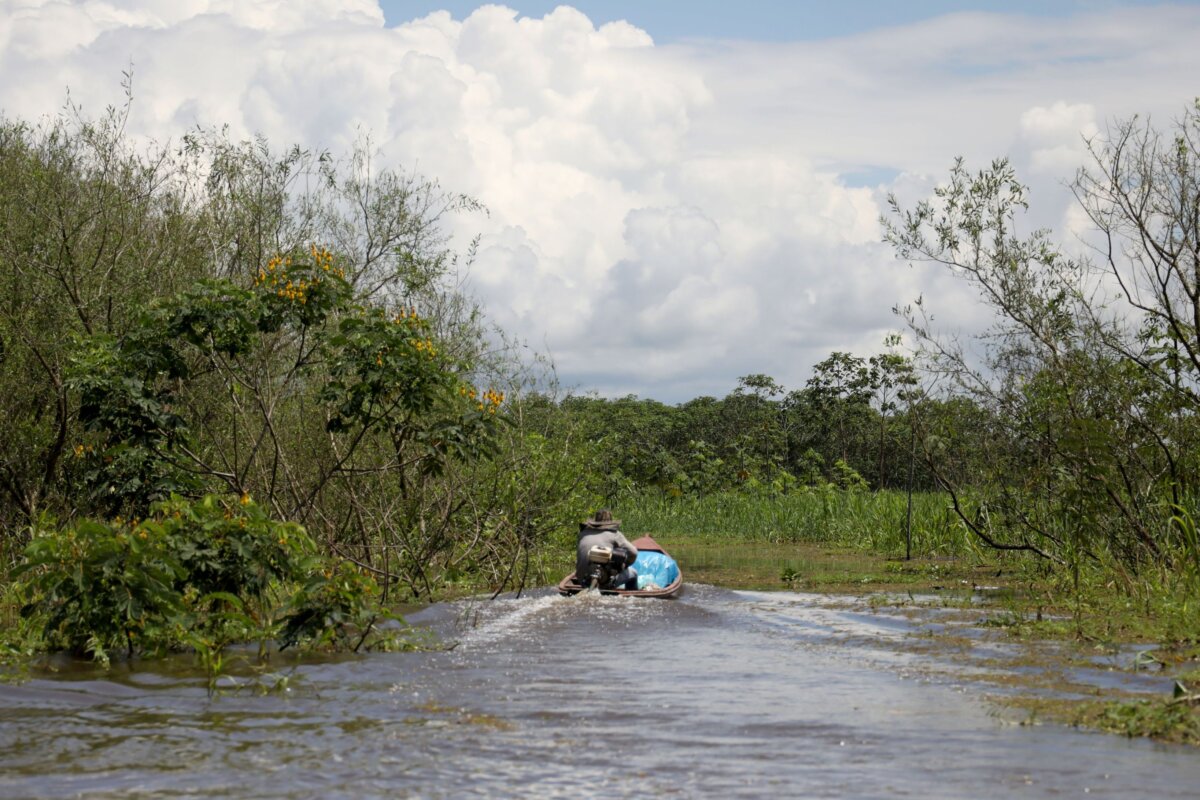 Through forests, floodplain forests and ecological processes, the Amazon basin brings incalculable benefits to the entire planet, contributing to the maintenance of global climate balance. Rio Amazonas, April 2025
Through forests, floodplain forests and ecological processes, the Amazon basin brings incalculable benefits to the entire planet, contributing to the maintenance of global climate balance. Rio Amazonas, April 2025
"All Amazonian life has evolved through patterns of change, and it is therefore essential that the rivers of this region change their behaviour throughout the year. Regulating the river with the construction of dams means eliminating its identity, reducing its biodiversity and its ecosystem services," Duque noted.
The Amazon acts as a global climate stabiliser, storing between 90 and 140 billion tonnes of carbon dioxide in its forests. Through its unique water cycle, the ecosystem absorbs solar energy and releases it as vapor, forming clouds and rain, and recycles 50 to 70 per cent of annual precipitation by releasing 7 million tonnes of water into the atmosphere each year.
The Amazon River contains one-fifth of the planet's unfrozen freshwater, and its biome contains 15 per cent of the river discharge to the ocean.
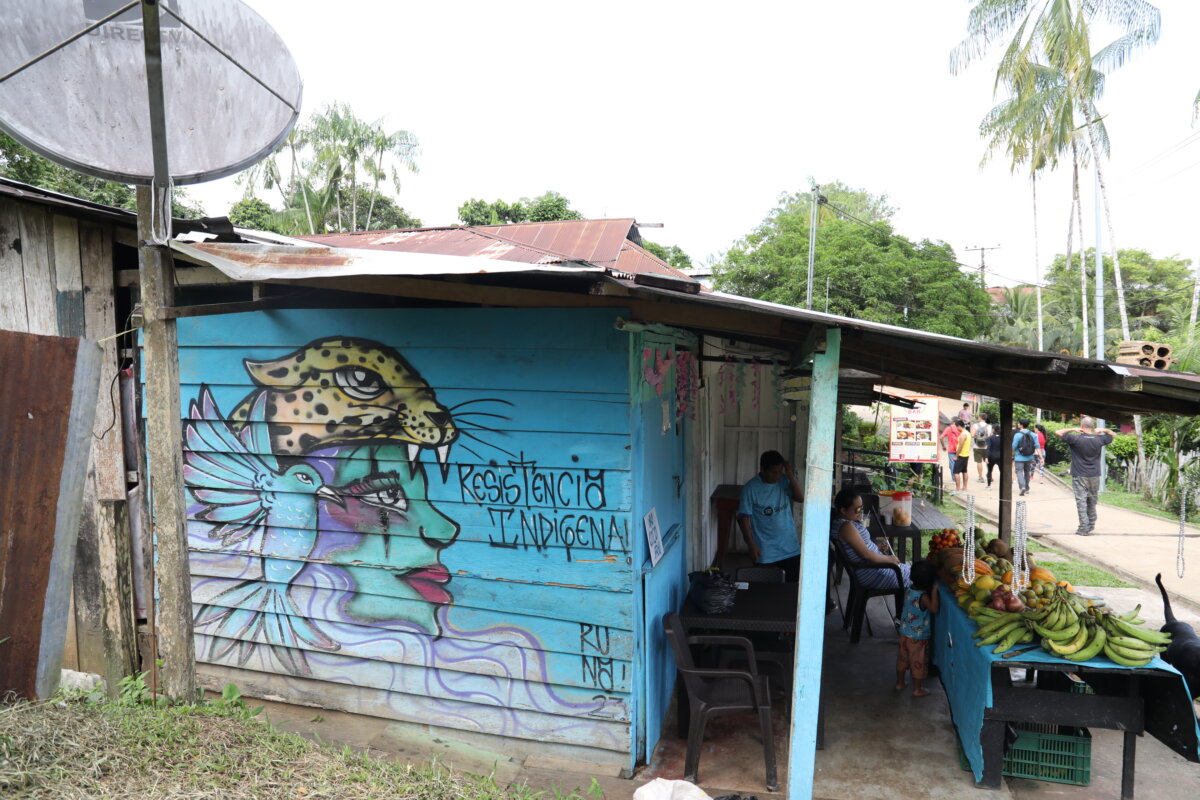
For the indigenous peoples who inhabit it, the river is an entity in whose waters the cosmogony of spiritual, cultural and symbolic life takes shape. Puerto Nariño, Colombia, 12 May, 2025.
"The river is not just water, but beneath its surface there is a world", Diana Luz Orozco, founder and one of the coordinators of the Natütama foundation, which deals with environmental monitoring, education and conservation of natural resources in Puerto Nariño, told FairPlanet.
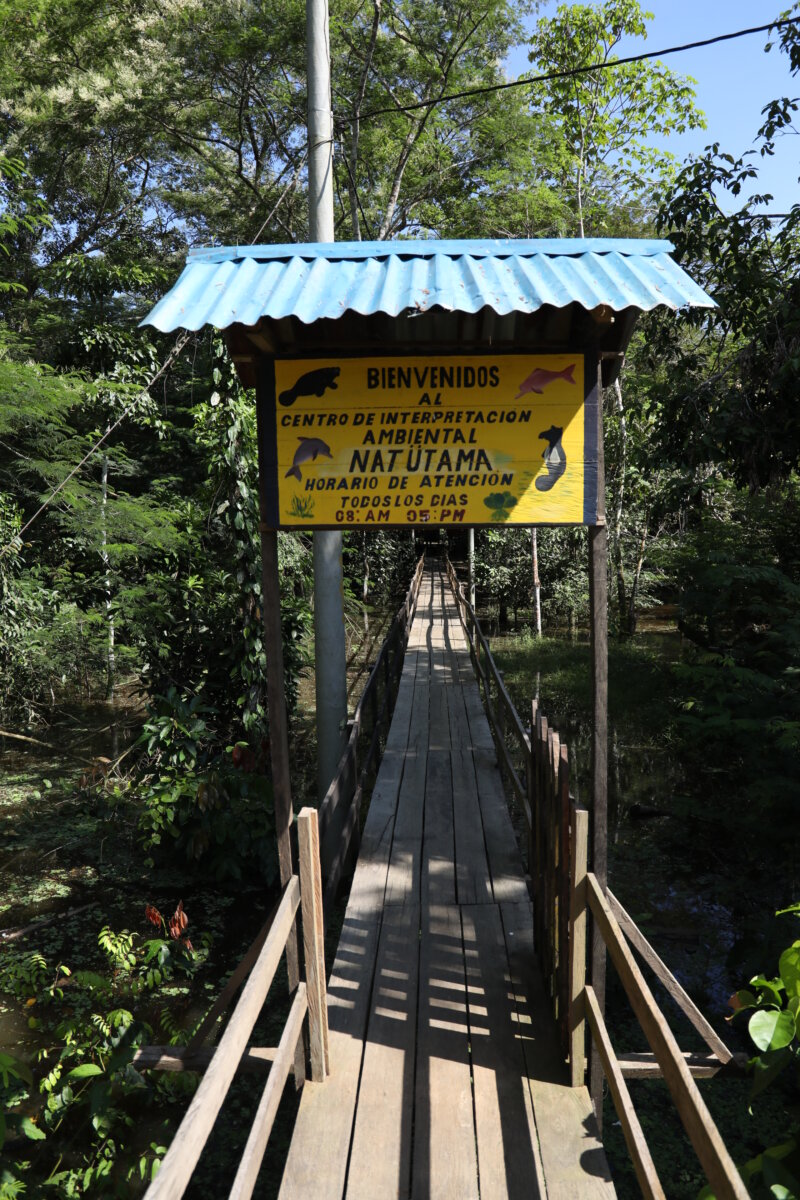
Natütama Foundation is a non-profit organisation that works with the community of Puerto Nariño to develop research, education, and conservation initiatives. Puerto Nariño, Colombia, 12 May, 2025.
Puerto Nariño, the second-largest city after Leticia in the department of Amazonas, has chosen the path of sustainability for several years, with houses entirely made of wood and straw in the traditional style, no motor vehicles, and purified drinking water for the entire community.
Here, Natütama, through collaboration between the native Tikuna people and researchers, takes care of preserving manatees, dolphins, and turtles, which are now free to swim unthreatened.
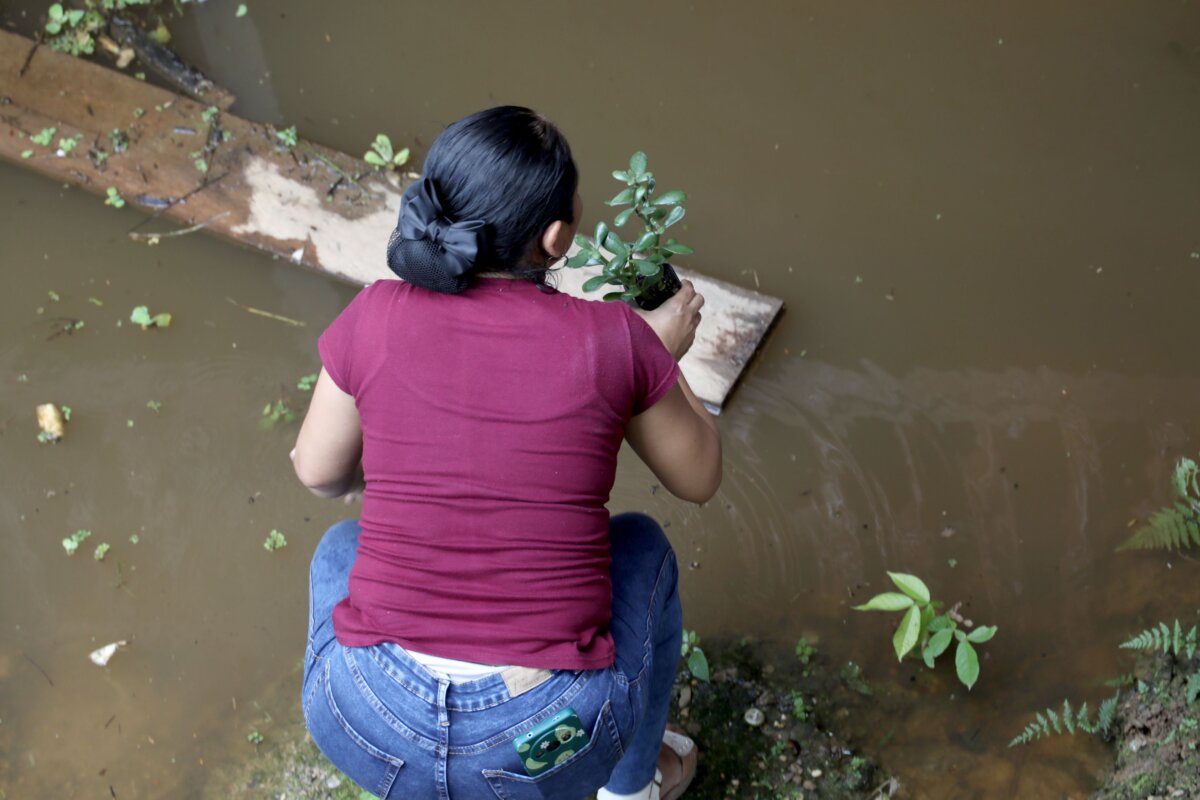 In the Tikuna language, Natütama means "underwater world." Puerto Nariño, Colombia, May 12, 2025
In the Tikuna language, Natütama means "underwater world." Puerto Nariño, Colombia, May 12, 2025
"What we try to preserve with the recovery of ancestral knowledge is very important, because it protects resources from the extractivist vision", Luz Orozco continues.
Currently, indigenous territories occupy approximately 2.3 million km², which is 27.5 per cent of the Amazonian basin, and more than a third of it is threatened by infrastructure projects or extractive activities. Duque emphasised that there is no need to build dikes or walls, but we should reclaim our relationship with the river and strive to respect its cycles, now more than ever faced with the challenge of climate change, and claims that the Amazon River people are amphibious, living in close symbiosis with the river.
"Ours is an amphibious people, who live in close contact with the river, and the authorities should take into account the communities that are suffering today", Duque Escobar stressed. "We should completely change our way of thinking and go back to learning how to live with the river."
Images by Giuditta Pellegrini.
By copying the embed code below, you agree to adhere to our republishing guidelines.
